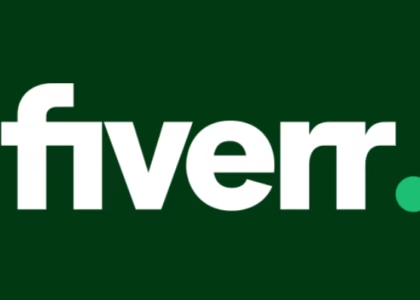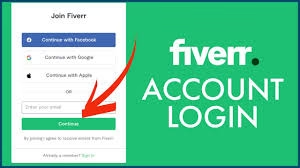PBN Links SEO PBN stands for Private Blog Network, which is a collection of websites that are built and maintained with one purpose—to link back to a “money site” (the main website you want to rank higher in Google). These networks are usually made up of expired domains with existing authority that are repurposed to pass SEO power to another site.
How PBN Links Work in SEO
PBN links are considered “do-follow” backlinks coming from sites that are in the creator’s full control. Unlike guest posts or editorial links, these links can be edited anytime. Since the content and the link placement are controlled, SEOs can target specific anchor texts and pages, making it a powerful (though risky) tactic for ranking sites.
The History and Evolution of PBNs
Rise of PBNs in the Early SEO Days
Back in the early 2010s, when PageRank was a key metric, SEOs discovered that links from authoritative domains had a direct impact on rankings. This gave rise to the idea of building networks of expired domains to funnel link juice to their main sites.
Google’s Crackdown on PBNs
Google eventually caught on. In 2014 and again in 2017, there were major deindexing waves, where entire networks were penalized or removed from search results. Despite this, PBNs never completely disappeared—they just became more sophisticated.
Why People Still Use PBN Links Today
Fast Rankings with Less Effort
Organic link building can take months or even years, especially in competitive niches. PBNs offer a shortcut. If done right, you can push a site to the first page of Google within weeks.
Full Control Over Link Placement
Want to point a link to a product page with exact match anchor text? Good luck doing that with a white-hat guest post. With PBNs, you control everything, from link location to anchor text to page relevance.
The SEO Benefits of PBN Links
Boosting Domain Authority
Using PBN links from expired domains with existing metrics (like DA, DR, TF) helps boost the perceived authority of your site in Google’s eyes.
Driving Targeted Organic Traffic
If your PBNs have real content, are indexed, and get traffic, they can actually refer real visitors to your money site, not just link juice.
Enhancing Topical Relevance
With PBNs, you can build out entire sites around a niche, creating topical clusters that support your main site and boost semantic SEO strength.
Risks and Downsides of Using PBN Links
Google’s Penalties
Let’s not sugarcoat it—PBNs are against Google’s Webmaster Guidelines. If you get caught, your site could get a manual action or be completely deindexed.
Deindexation of PBN Sites
If your PBN sites are not maintained or are discovered by Google, they can be removed from search results, rendering their links worthless.
Reputation Damage
If you’re building a brand or trying to attract investors, being tied to shady SEO tactics like PBNs can hurt your reputation in the long run.
How to Identify a Quality PBN
Domain Metrics to Check
- Domain Authority (DA)
- Domain Rating (DR)
- Trust Flow (TF)
- Citation Flow (CF)
- Number of referring domains (RD)
Look for clean backlink profiles and no history of spam.
Content Quality Indicators
A solid PBN site should have:
- Well-written, niche-relevant articles
- Real authors or personas
- A clean, responsive design
- No obvious signs it’s a PBN
Link Profile Analysis
Use tools like Ahrefs, SEMrush, or Majestic to check the PBN site’s backlinks. Avoid domains with links from foreign spam sites or pharma/porn content.
Building Your Own PBN vs Buying Links
Cost Comparison
Building your own PBN:
- Domain: $10–$100+
- Hosting: $2–$5/month per site
- Content: $10–$50 per article
- Total cost per site: $100–$300+
Buying PBN links:
- $20–$150 per link, depending on quality
Time and Resource Investment
Managing a PBN takes time—content writing, updates, hosting, backups, and keeping everything stealthy. Buying is faster, but riskier.
Risk Levels
Your own PBN = More control, less exposure
Buying PBN links = Easier, but you’re at the mercy of someone else’s risk management
How to Use PBN Links Safely
Keep Your Footprints Clean
Never host all your PBNs on the same server or IP. Use:
- Cloudflare or CDN services
- Unique CMS themes and plugins
- Different WHOIS or privacy settings
Diversify Your Link Profile
Don’t rely solely on PBNs. Mix in:
- Guest posts
- Editorial links
- Social media mentions
- Citations
Use Branded and Natural Anchor Texts
Avoid “exact match” over-optimization. Use:
- Brand name
- Generic terms (click here, visit this site)
- Natural phrases
Where to Buy PBN Links (Safely)
Reliable PBN Marketplaces
Some marketplaces that are commonly used in the SEO community include:
- Legit PBN sellers on SEO forums (like BlackHatWorld)
- Private vendors with real testimonials
- Services with sample sites available on request
Red Flags to Watch For
- Hidden metrics
- Unwillingness to share sample links
- Sites with spun or AI-generated content
- Exact match anchor stuffing on homepage
Real-World Case Studies of PBN Success
Niche Website Ranking Case
A niche affiliate site selling golf equipment used 5 high-quality PBN links. Within 6 weeks, the site moved from position #34 to #6 for its target keyword, resulting in a 300% revenue increase.
E-commerce Boost from PBNs
An e-commerce store selling niche skincare products added 10 PBN links over 3 months. Not only did organic rankings increase, but the site also began receiving direct referral traffic from the PBN sites themselves.
The Future of PBN Links in SEO
Will They Still Work in 2025 and Beyond?
PBNs evolve just like Google’s algorithm. As long as backlinks remain a ranking factor, well-maintained, clean PBNs will likely continue to work.
AI and Google’s Algorithm Evolution
AI-powered search like Google’s SGE (Search Generative Experience) may reduce the effectiveness of traditional backlinks. However, links from real-looking sites with high-quality content will still hold weight.
Ethical Considerations of PBN Usage
White Hat vs Black Hat SEO Debate
White hat SEOs frown upon PBNs because they violate search engine rules. But in the real world, many top-ranking sites use them—discreetly.
Is There a Grey Area?
Yes. If your PBN sites have real content, real traffic, and add value to the web, some argue it’s more grey than black.
Tools to Manage and Monitor PBN Links
SEO Software for Link Tracking
- Ahrefs: for backlink monitoring
- SEMrush: for tracking keyword movement
- SerpRobot: for rank tracking
Hosting and Security Tools
- Easy Blog Networks
- Bulk Buy Hosting
- Cloudflare + Private WHOIS
Alternatives to PBN Link Building
Guest Posting
Pitch content to blogs in your niche. Slower, but safe and evergreen.
Digital PR and HARO Links
Get featured on big media sites like Forbes, Business Insider, or HuffPost. High authority and long-term benefits.
Link Exchanges and Niche Edits
Swap links with others or place links in existing articles (niche edits). Less risk, more cost-effective.
Conclusion
PBN links are a controversial but undeniably effective SEO tactic. They offer control, speed, and power—but also come with risk. If you choose to use them, do it wisely: build quality networks, hide your footprints, and always diversify. Remember, SEO is a long game—don’t bet your entire site on one strategy.
FAQs
Are PBN links legal to use in SEO?
Yes, they’re legal—but they violate Google’s Webmaster Guidelines, which can lead to penalties.
Can PBN links harm my website?
If poorly built or overused, yes. They can lead to manual penalties or ranking drops.
How much do PBN links cost?
Anywhere from $20 to $150+ per link, depending on quality and metrics.
How long does it take to see SEO results with PBNs?
Usually within 2 to 6 weeks, but it depends on competition and site strength.
Can I use PBN links for local SEO?
Absolutely. PBNs can help rank local service pages, especially in less competitive markets.






